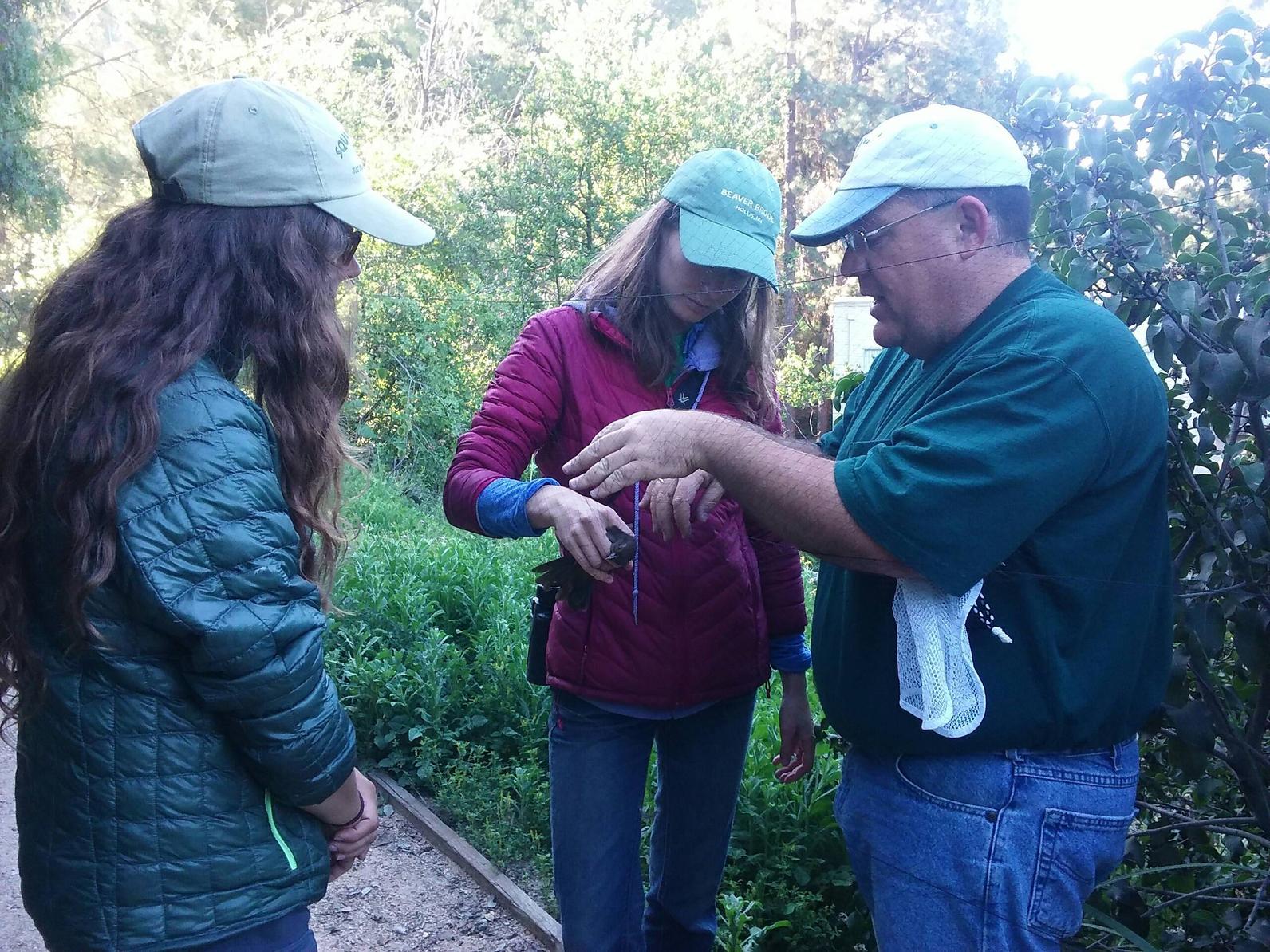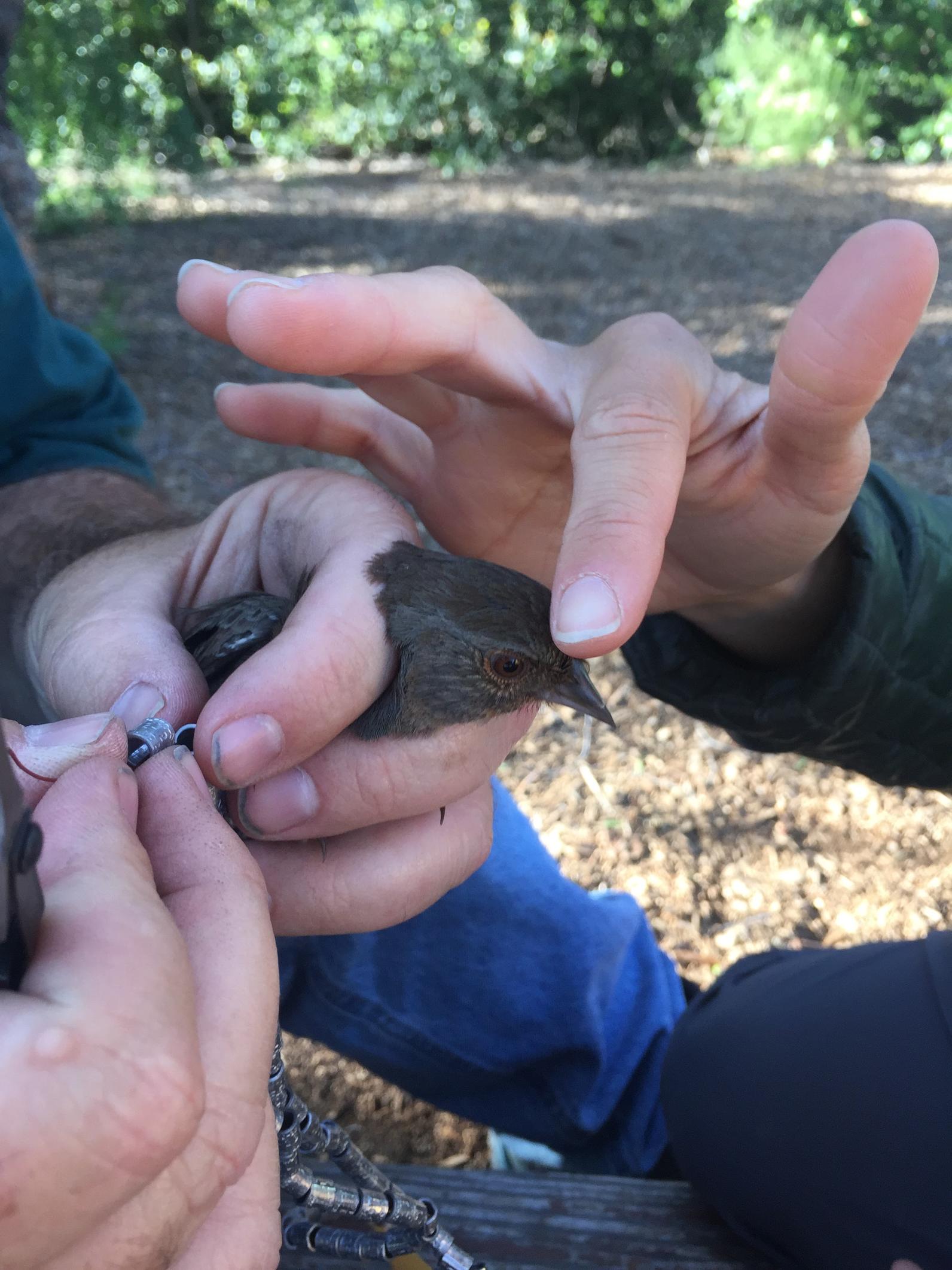By Dana Poblete
Did you know that there are islands all over Los Angeles County? In fact, Debs Park is one of them. (So are Verdugo Hills, Baldwin Hills, and Griffith Park, just to name a few.) “Debs Park is an island within the sea of urbanization that is Los Angeles,” says wildlife biologist Tom Ryan. This hidden jewel of Northeast LA could also be described as an oasis of native plants and wildlife, including over 100 species of birds, in what happens to be the “birdiest” city in the country. It’s true—LA hosts the largest diversity of bird species (over 520 spotted, historically) compared to any other city.
The resident and transient birds in Debs can teach scientists and the community a lot about conservation. So, Audubon Center has teamed up with Tom Ryan to bring his bird banding program to the park. The project involves setting up monofilament nets to catch birds, and then attaching metal numbered tags to the birds’ legs. Over time, these tags would allow Ryan and other scientists and community scientists around the continent to identify individuals and track their migratory patterns year after year. All data will be uploaded to the US Geological Service’s Bird Banding Laboratory Database.
This spring and fall are essentially trial runs for the project, but next year, Ryan would like to establish Debs Park as a banding station in the MAPS Program of the Institute for Bird Populations. The thriving avian culture in the park can provide insights into the movement and life history of juveniles, as well as local extinction patterns, which would inform scientists’ conservation work here and in other urban “islands.” Ryan explains, “What we’re seeing in Los Angeles is an increase in isolation of habitat patches. We really want to understand which species are able to survive [in these patches] and which are basically going to become extinct. If we start to get information on their movements and their year-to-year survival, then we can compare that between patches. We can see what conditions are presented in the better patches and concentrate restoration back on places that appear to be more what you would call a population sink (lower-quality habitat).”
But ecology is only half of the story. There’s huge sociological value in this work, too. Ryan and the Audubon Center share a common goal: to empower local communities to engage in conservation right where they live. “I worked in Venezuela from 1993 to 2004 banding migratory birds in one of the main migratory passes into the country,” says Ryan. “Venezuela Audubon had taken the project and turned it into a big environmental education program as well. They had hundreds of school kids and local residents joining in and helping with the bird banding. It really gave the community a great introduction to science and got the local people up into the park.”
Some people wonder—is catching and tagging birds intrusive, even dangerous, to the animals? “Bird banding has been done for a long time, and the practices are very standard. Bird safety always comes first,” says Ryan, who’s been banding for over 25 years now. “It certainly creates a disruption in the birds’ day, but there have been a lot of studies that show that as far as the birds’ reproductive cycles, their ability to migrate, their survival from year to year, they’re not really affected by that brief period of handling. Whereas, if we mark and release them, there’s a lot more that can be done, more in-depth at the population level, for these species.”

Ryan’s Pasadena City College students and Audubon Center volunteers—the ultimate bird lovers and stewards of Debs Park—get the opportunity to work hands-on with him on his important (and fun!) research. Recently, we caught, banded, and released a female California towhee and a male Anna’s hummingbird without a hitch. Would you believe that the hummingbird was as still as a statue? Energy-conservation mode: engaged!

Fostering the connection between regular folks and the natural spaces that exist in their neighborhoods is one of the best ways to create a sustainable conservation model. In Los Angeles, so few people even realize the wealth of wildlife that exists in their backyards. But once you get up close and personal with birds and learn firsthand about their journeys—it’s impossible to not feel inspired to preserve that special experience.





